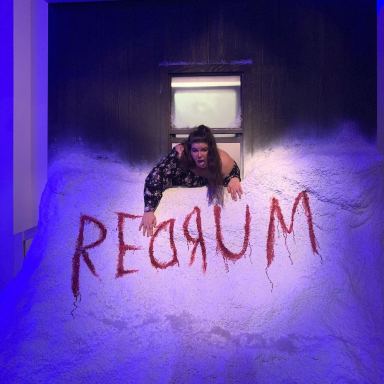44+ Queer Horror Movies
Queer horror movies can be those that follow an LGBT protagonist, those that have a queer writer and/or director, or even movies that just feel thematically familiar to queer audiences.

Movies are a mirror that reflect cultural values back at the viewer. For instance, horror movies do this by what they choose to present as “monstrous” or scary. This makes the genre fertile territory for anyone curious about tracing taboos through the decades of Hollywood (or any culture’s film catalog) history.
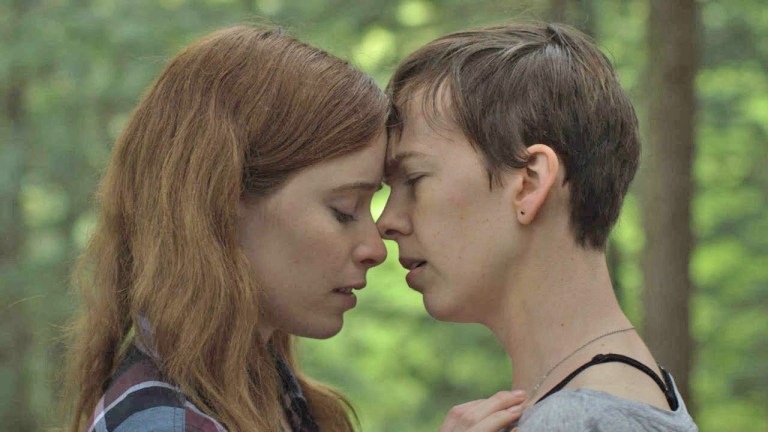
Queer horror movies can be those that follow an LGBT protagonist, those that have a queer writer and/or director, or even movies that just feel thematically familiar to queer audiences. In a collection of essays about horror movies from queer writers, It Came From the Closet, Carrow Narby argues that The Blob (1988) can be considered a queer horror movie because “the blob” is a relatable character to queer people, “I don’t know what could be more queer than being narratively positioned as a threat to family values, particularly to children.” Going further, Zefyr Lisowski argues in the same book that “If there isn’t a supremacist culture to view things through, does monstrosity even exist?”
Table of Contents
Queer horror movies 1932-1963
The Old Dark House (1932)
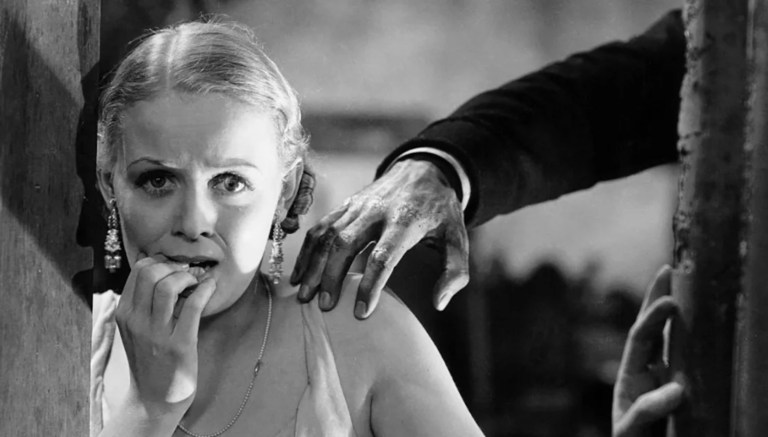
Five strangers seek shelter from a storm together at a creepy old house in the Welsh countryside. Filled with queer camp and flair, The Old Dark House would serve as inspiration for other cult classics such as The Rocky Horror Picture Show and The Bride of Frankenstein. While Whale was known for not shying away from the taboo and what would be deemed as “acceptable” to put on screen at the time, the queer coding in each character of the film has been heavily dissected throughout the decades. When house matriarch Rebecca (Eva Moore) chastises the young and beautiful Margaret (Gloria Stuart) for her confident sexuality, the subtext of Rebecca’s own desire and envy to be like (or with) Margaret is clearly evident. When travelers Roger (Melvyn Douglas) and Gladys (Lilian Bond) find a spark between them and go to tell her “platonic” partner William (Charles Laughton), William is not only not upset, he remarks that marrying Gladys is something he clearly wouldn’t do.
Dracula’s Daughter (1936)
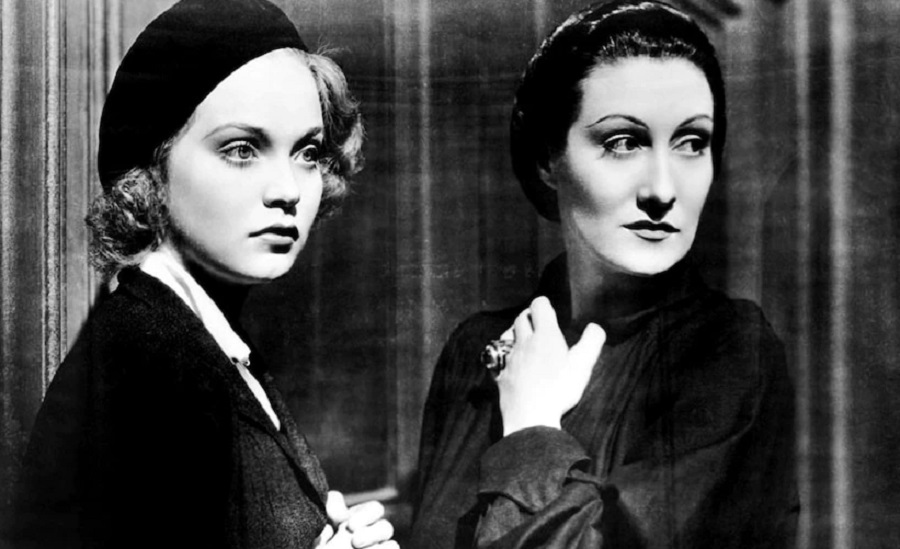
The lesbian vampire genre goes back to the 1800s in literature, but Dracula’s Daughter marked the first time it was translated into a film. Dracula’s Daughter watches as Countess Marya Zaleska (Gloria Holden) attempts to lift the vampiric curse left over her by her father. The film’s lesbian implications were seen as a concern to the Production Code Administration (PCA), even resulting in the head of the PCA enforcing the revision of a scene between Zaleska and a female model she attacks. The PCA stated that they must do everything to “avoid any suggestion of perverse sexual desire.” Regardless, Zaleska’s attraction to women was used heavily in the marketing of the film (i.e., “Save the women of London from Dracula’s Daughter!”), and a scene between Zaleska and Janet is famously referred to as “the longest kiss never filmed.”
The Picture Of Dorian Gray (1945)
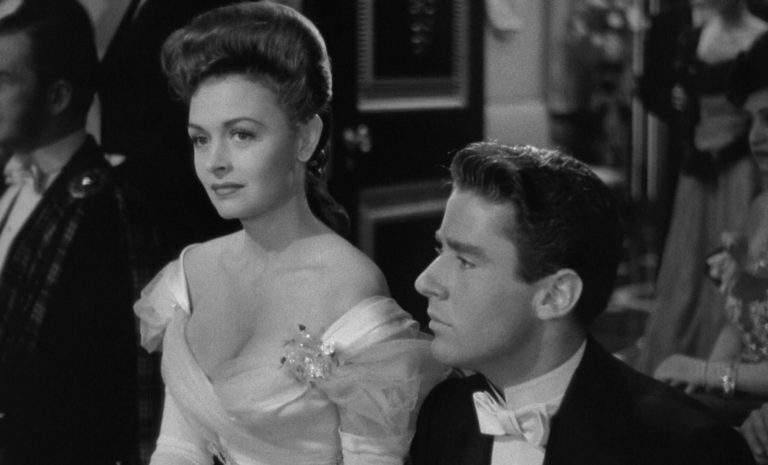
Based on the Oscar Wilde classic of the same name, The Picture of Dorian Gray tells the story of the twisted Dorian Gray (Hatfield), a young man obsessed with the idea of preserving his youth. The Picture of Dorian Gray has long been associated with the idea of hiding one’s true self, specifically with the idea of being “in the closet.” Additionally, Dorian himself is described as a “man of broad sexual appetites.” Whether or not Dorian Gray is truly gay or queer will likely never be revealed, but the subtextual queer coding is impossible to deny.
Eyes Without a Face (1960)
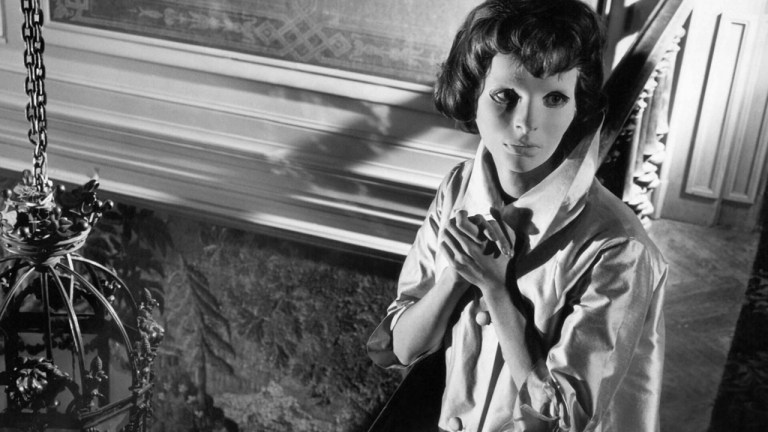
A French horror movie following the Parisian Dr. Génessier (Pierre Brasseur), whose daughter, Christiane (Édith Scob), disappeared following her disfigurement in a car accident caused by the doctor. It turns out Christiane is alive and in hiding at the Génessier’s mansion. Dr. Génessier kidnaps young women and performs experiments attempting to transplant a new face onto his daughter. While they wait for a successful transfer, Christiane wears a mask at home to hide her disfigured face.
Coming into my queerness was an agreement to no longer borrow someone else’s skin to hide myself.
Sachiko Ragosta, It Came From the Closet
The Haunting (1963)
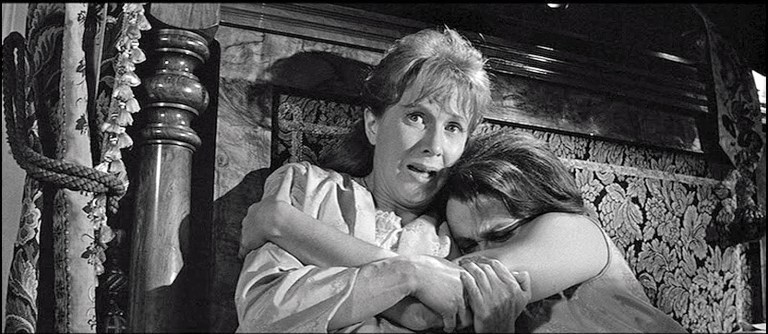
Based on the Shirley Jackson novel The Haunting of Hill House, the film revolves around Dr. John Markway (Richard Johnson) studying paranormal activity in the notoriously haunted Hill House. Markaway invites Theodora/Theo (Claire Bloom) and Eleanor/Nell (Julie Harris) as his guests to help him study the phenomena. Theo is a lesbian character (which is canon) and the film is remembered for a rare positive portrayal of lesbianism, especially at the time. The MPAA demanded that no touching between Theo and Eleanor be shown in the film, which may have lead to the scene where Eleanor believes she is holding Theo’s hand but is actually touching an incorporeal being.
Queer horror movies 1975-1999
The Rocky Horror Picture Show (1975)
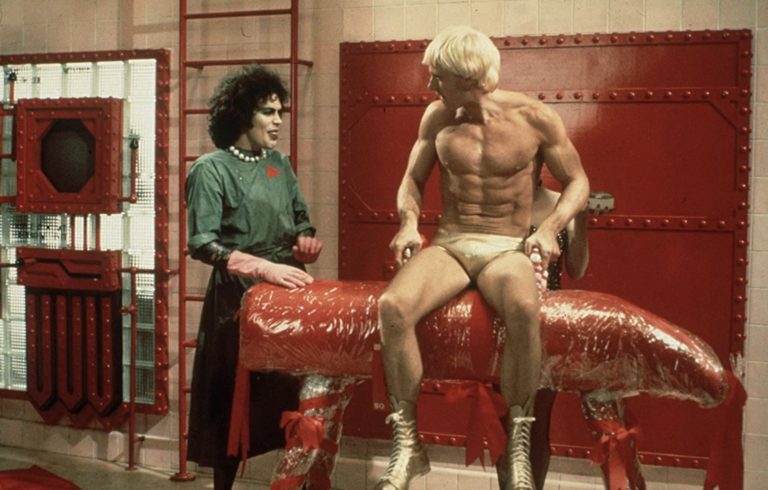
The 1975 independent musical comedy horror is the definition of a queer cult classic. When a young engaged couple’s car breaks down on a dark and stormy night, the pair seek help from a nearby castle, only to be confronted by an alien transvestite/mad scientist and his household of equally flamboyant and quirky servants. The straitlaced, exceptionally vanilla couple are both seduced by Dr. Frank N. Furter (played by Tim Curry).
The Fourth Man (1983)
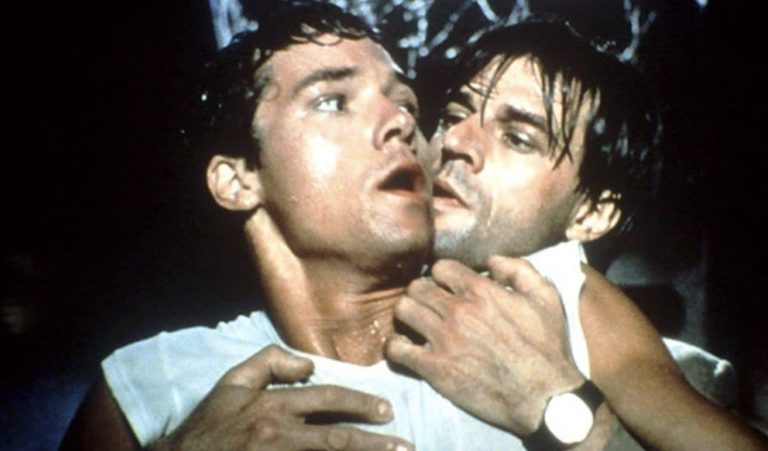
Sexually intense and graphically violent, The Fourth Man introduces us to bisexual writer Gerard, who finds himself entangled in a love triangle with the enigmatic Christine and her other lover, Herman. Gerard becomes obsessed with Herman but slowly becomes plagued with visions and nightmares that imply Christine may intend on murdering him. Despite being riddled with misogyny, The Fourth Man is lauded by centering homosexuality as an almost protagonist-like character in the film. Gerard’s obsession with Herman (another man) is ultimately what saves him from the femme fatale Christine.
Sleepaway Camp (1983)
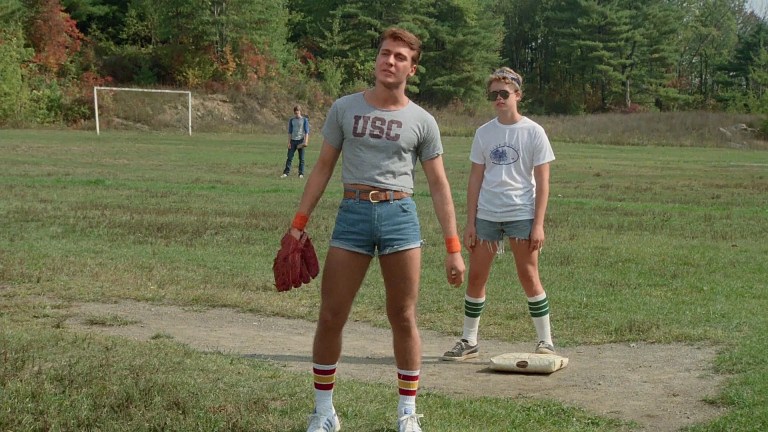
While the infamous twist ending of Sleepaway Camp is objectively transphobic (because it presents Angela’s gender non-conformity as monstrous and the reason she murders) it’s also a unique film in that it sexualizes male bodies more than female bodies. As Viet Dinh points out, “the film presents a homosexual version of Laura Mulvey’s ‘male gaze’, which lingers on male bodies and, for the most part, ignores female ones.” Dinh is referencing the sweeping shots of male campers and counselors in short-shorts and midriff baring cutoff t-shirts and the multiple shots of male crotch bulges. Later releases of Sleepaway Camp even had to edit out a shot of male children’s nude derrières in a gratuitous skinny dipping scene.
Slashers, by contrast, make the victims the transgressors. Consider the oft-stated ‘rules’ for surviving a slasher film: no sex, no drugs, no wandering off alone. What are these rules if not conservative morality? What is the killer if not a brutal enforcer of this morality?
Viet Dinh, It Came From the Closet
A Nightmare on Elm Street 2: Freddy’s Revenge (1985)
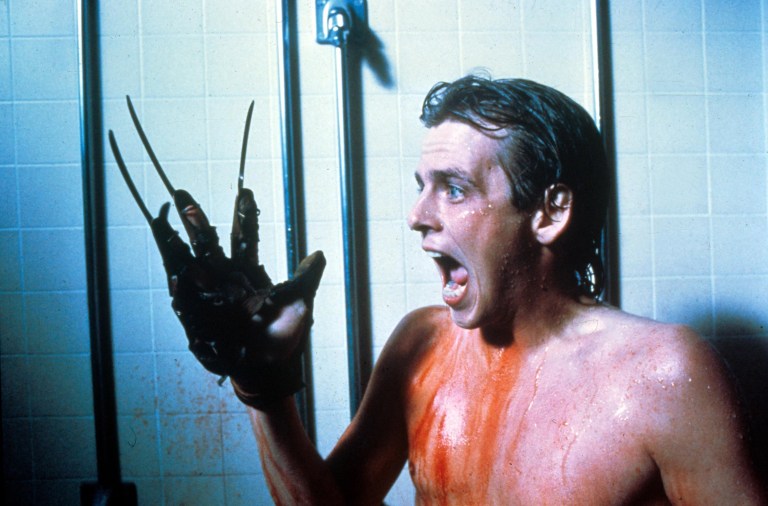
Mark Patton stars as Jesse Walsh, a high school student who has moved into Nancy Thompson’s former home five years after the events of the original film. Freddy Krueger (Robert Englund) begins to stalk Jesse in his dreams and despite this just happening to Nancy, no one believes him. While there were no official queer characters in Freddy’s Revenge, the film’s aesthetic (including Jesse’s visit to a fetish club) focuses on homoeroticism to the extent that it was called “the gayest film ever” upon its release. At the time, both the writer (David Chaskin) and director (Jack Sholder) claimed they had no idea they were making a film with gay subtext, but the homoerotic undertones are obvious to modern viewers. Chaskin later took ownership of this in the documentary Never Sleep Again: The Elm Street Legacy (2010).
The gay subtext of the Elm Street sequel, which was purposefully woven into the script by screenwriter David Chaskin, began to be noticed by fans and critics shortly after the film’s release. But rather than admit what he’d done, Chaskin blamed Patton for making the film — which included a scene where Patton’s character runs into his gym coach at a gay leather bar and lines like “He’s inside me, and he wants to take me again!”—too gay.
Jase Peeples, A Nightmare in Hollywood Couldn’t Kill Mark Patton
The Hunger (1983)
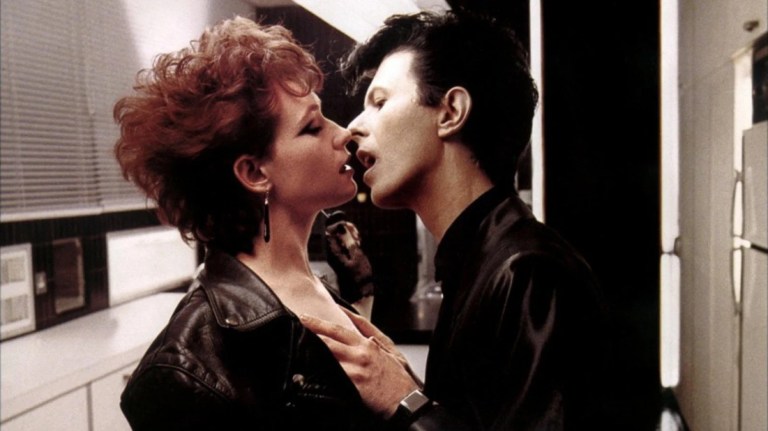
An erotic horror movie directed by Tony Scott following a vampire (Catherine Deneuve) whose 200-year-old lover John (David bowie) seeks out a doctor (Susan Sarandon) to stop him from aging. The vampire and the doctor meet and enjoy a sexual encounter, subsequently the doctor begins to transform into a vampire. The Hunger was featured in an influential documentary about LGBT characters in film, The Celluloid Closet (1995).
Poison (1991)
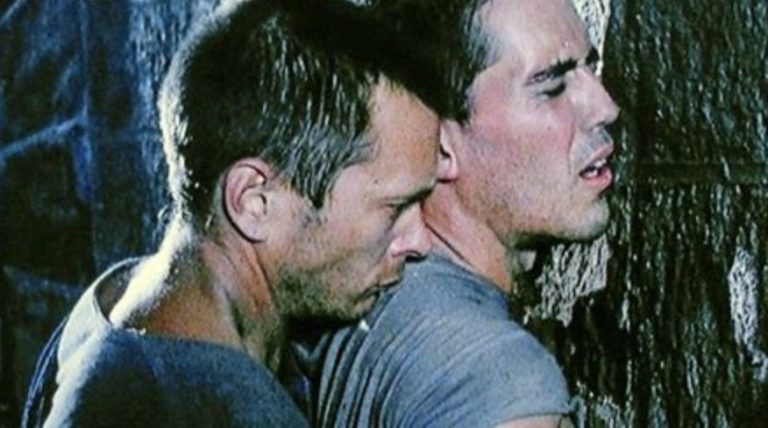
Three different stories converge in this film by Toddy Haynes—Horror, Hero, and Homo—the latter of which involves two prisoners at Fontenal prison in Louisiana who had known each other years before at a juvenile facility in Baton Rouge. At first they wrestle and fight, but this leads straight into a loving sexual relationship. The Reverend Donald E. Wildmon of the American Family Association wrote an angry letter to Congress complaining of “explicit porno scenes of homosexuals involved in anal sex,” although the scenes aren’t explicit at all. Senses of Cinema writes, “At the heart of Poison – alongside the other pioneering films of the New Queer Cinema movement – is a conscious temporal attempt to confront the abusive history of queer as a category of shame, and to move it in a completely different direction.”
Death Becomes Her (1992)
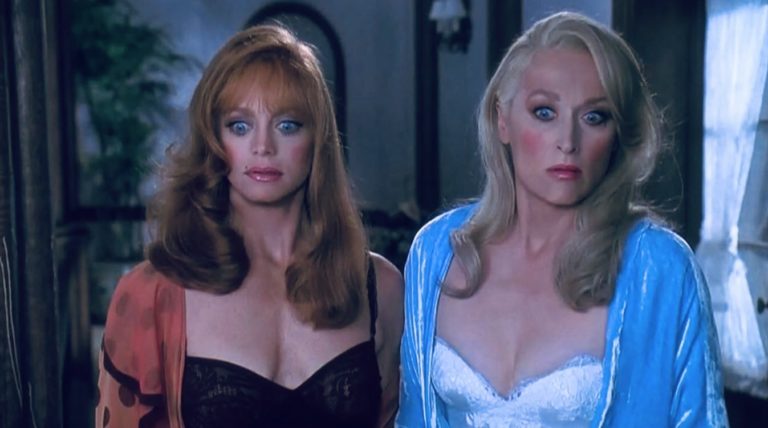
Although there are no scenes of queer love in this film, it has become a gay favorite due to its focus on two intensely catty and narcissistic women (Goldie Hawn and Meryl Streep) who compete with one another to remain beautiful—even up until death and afterwards as they vie for the affections of a plastic surgeon (Bruce Willis). Vanity Fair writes, “25 years after fizzling out in theaters, this delightfully macabre comedy is a gay cult classic….Madeline and Helen’s looks have inspired cosplay and untold drag performances. The film is screened during Pride month, where bar rooms and theaters full of fans mouth along with every line.”
Heavenly Creatures (1994)
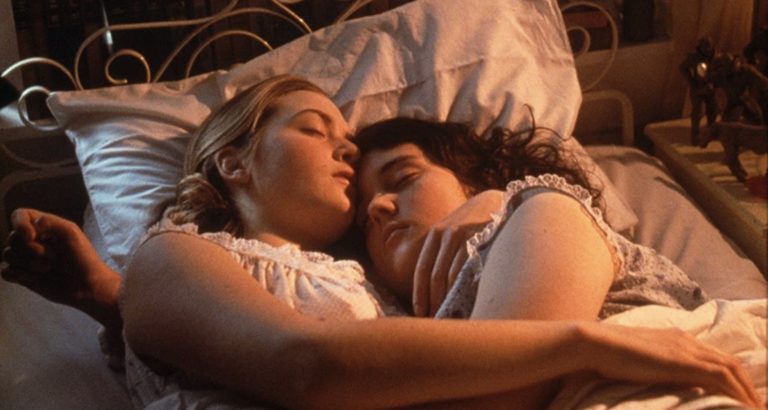
This film is based on the true story of Pauline Parker (Melanie Lynskey) and uses the real Parker’s diaries as a primary source. In the early 1950s in New Zealand, Pauline met Juliet Hulme (Kate Winslet), and became involved in an all-consuming friendship with her that was so intense, it involved a fantasy land that they called the Fourth World. They dress up together—and take off their clothes together in the woods and have sex together—and are so inseparable that their parents become suspicious and seek to separate them. But the girls take violent revenge against their parents and are finally separated when they are sent to prison for their crime.
Scream (1996)
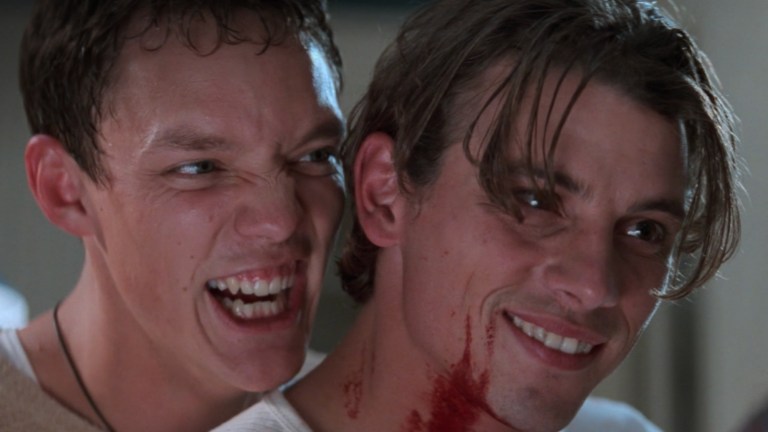
On the anniversary of her mother’s death, high school student Sidney Prescott (Neve Campbell) is caught in the crosshairs of a masked Ghostface killer. Horror fans and film critics alike have long commented on the queer undertones between characters Stu Macher (Matthew Lillard) and Billy Loomis (Skeet Ulrich), wondering if Stu was in love with Billy and Billy was narcissistic enough to exploit Stu’s sexuality in order to gain a partner in crime. Openly gay writer Kevin Williamson has confirmed that this take is canon, saying he was inspired by the real life killers Leopold and Loeb in writing the characters.
One of the reasons that one could get the other one [to follow] is because I think the other one was secretly in love with him. And it was sort of a fascinating case study on double murderers. If you Google ‘Leopold and Loeb,’ you will see. And you’ll read about it and you’ll get, OK, that’s Billy and Stu.
Kevin Williamson, It’s Canon That Billy And Stu Are Queer-Coded in ‘Scream’ (1996)
Modern queer horror movies 2000-
In My Skin (2002)
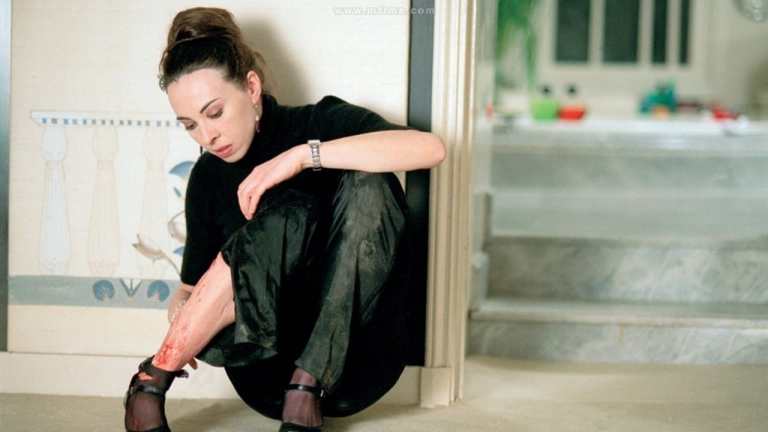
A New French Extremity horror movie centering on a woman named Esther (Marina de Van) who seems to have her life together. Esther accidentally injures her leg at a party and doesn’t notice at first, but the wound is serious enough that she laters goes to a doctor. The incident prompts Esther’s curiosity about her body and she begins to self-injure in increasingly risky ways.
Esther never explains why she needs to destroy herself, yet the answer is right there in front of us. Why does an animal chew its own leg off? Because it’s trapped.
Jude Ellison S. Doyle, It Came From the Closet
High Tension (2003)
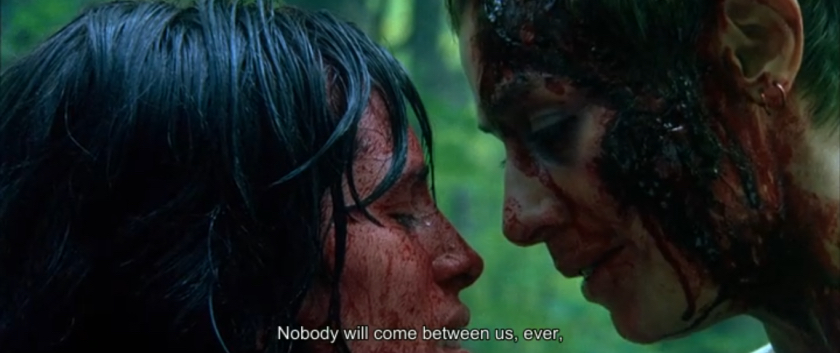
A French slasher movie about best friends Marie (Cécile de France) and Alex (Maïwenn). Unbeknownst to Alex, Marie is in love with her. When the two experience a brutal home invasion at Alex’s parent’s farmhouse, Alex is kidnapped. Marie will stop at nothing to rescue Alex and be together.
October Moon (2005)
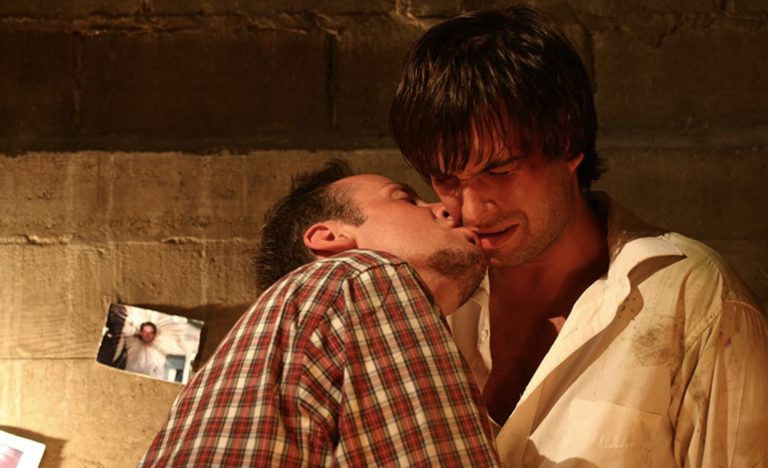
An independent horror movie about a straight man who falls in love and becomes obsessed with his gay male boss. His family, female fiancee, and friends all reject him. From there, his life takes a violent turn for the worse. Horror Society writes, “Its importance on social culture was even theorized in the college academic journal “Queer Horror: Sexuality and Masculinity at the Margins” (I.B. Tauris, 2016)….This tale of a deadly love triangle critics labeled “Gaytal Attraction” has spawned scores of imitators, annual Halloween viewing parties, and with its sequel October Moon 2: November Son it became the world’s first [explicitly] gay horror franchise.”
Otto; Or, Up With Dead People (2008)

In this independent film by gay director Bruce La Bruce, Jey Crisfar stars in the title role as a sensitive and handsome goth zombie. Otto has amnesia and finds himself wandering the city streets aimlessly until he auditions for a zombie film. He gets the role and while staying with the filmmakers, he discovers a wallet that brings back his recollection of the past, including the fact that he had a boyfriend named Rudolf. He arranges a date with Rudolf at the playground where they met, and this is where the horror truly starts. Horror Buzz writes, “Man, if you don’t know Bruce La Bruce, you’re in for a treat. At least, if you like foreign semi-pornographic queer zombie art films with an amazing soundtrack.”
Jennifer’s Body (2009)
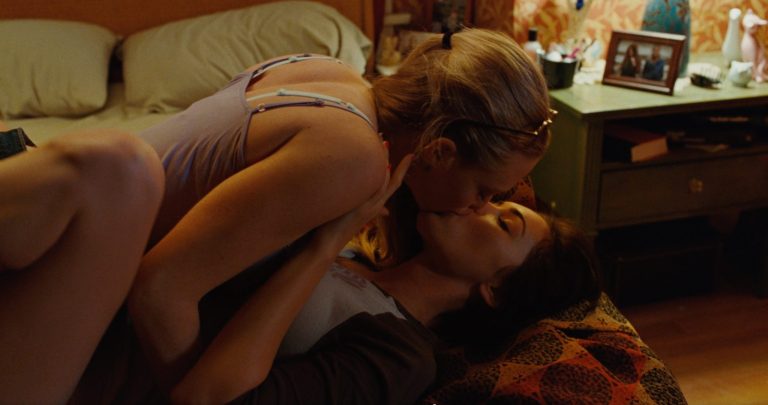
A horror comedy about two female best friends in Devil’s Kettle, Minnesota. Their friendship is tested when Jennifer (Megan Fox) becomes a succubus after she is the victim of a failed virgin sacrifice (as Jennifer says, she isn’t even a backdoor virgin). Needy (Amanda Seyfried) has to learn to stand up to her friend when Jennifer sets her man-eating (sic) sights on Needy’s boyfriend (Johnny Simmons). Like in Scream (1996) Jennifer teases a sexual relationship with her best friend either because she is actually bisexual or because she is a narcissist who enjoys the attention and sees sexuality as a tool to manipulate those around her.
Black Swan (2010)
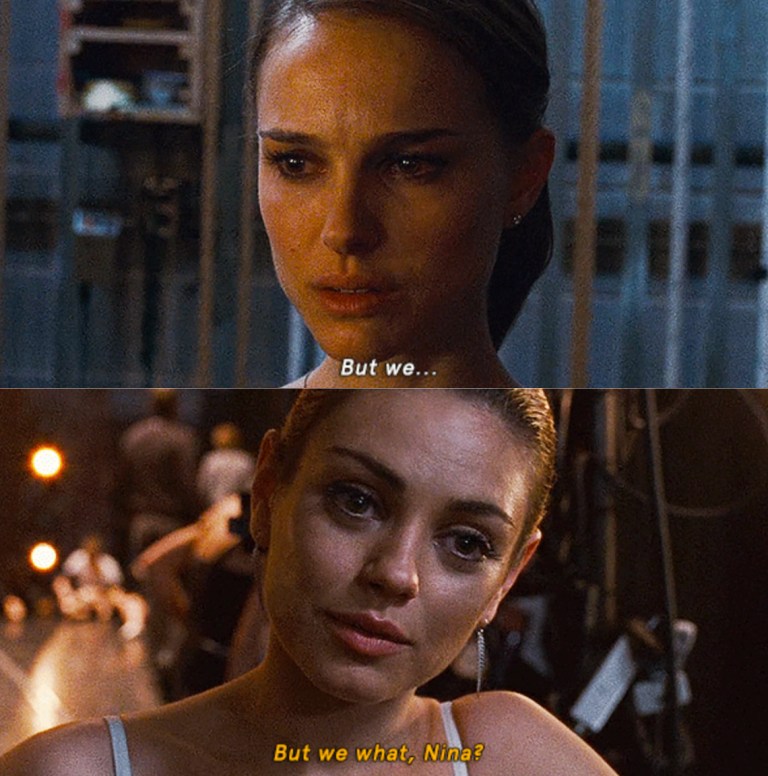
Natalie Portman stars as Nina, a devoted New York City ballerina who has just won the lead role in Swan Lake. While Nina’s childlike personality and drive for perfection fit the role of the white swan, she has competition from her alternate, Lily (Mila Kunis), whose personality better fits the role of the black swan. As the two engage in a sexually charged friendship Nina gets in touch with her dark side at the risk of her own sanity. Queering the Closet writes, “Even though Nina never comes out as a lesbian or bisexual, the lesbian sex scene establishes her as having same sex desire.”
Scream 4 (2011)
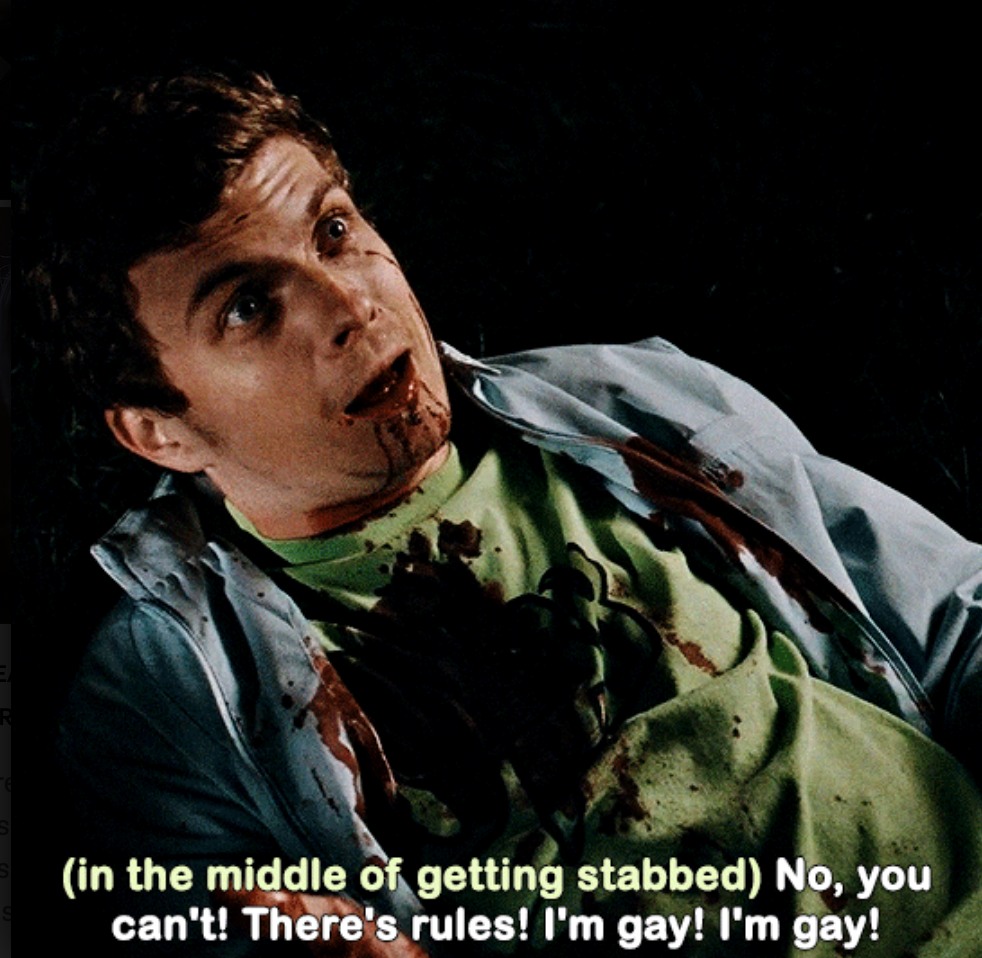
Arguably the franchise’s campiest installment, Scream 4 follows Sidney Prescott (Neve Campbell) as she returns to Woodsboro on the final leg of her book tour. Ghostface shows up again and targets Sidney’s teenage niece (Emma Roberts) and her friends. One of the meta horror “rules” discussed in Scream 4 is the supposed modern rule of gay characters always surviving, which doesn’t actually have precedent in real horror canon.
In 2011’s Scream 4, the third sequel in Wes Craven’a metahorror franchise, a character claims that ‘to survive a modern horror movie, you pretty much have to be gay.’ On the surface it’s a clever, progressive thesis, but ultimately, it rings hollow: Does the novelty of queerness shield a character from danger because they are unconsidered and therefore underestimated, or is it simply that queer characters are so seldom found in horror films that their survival is a mere technicality?
Joe Vallese, It Came From the Closet
Stranger by the Lake (2013)
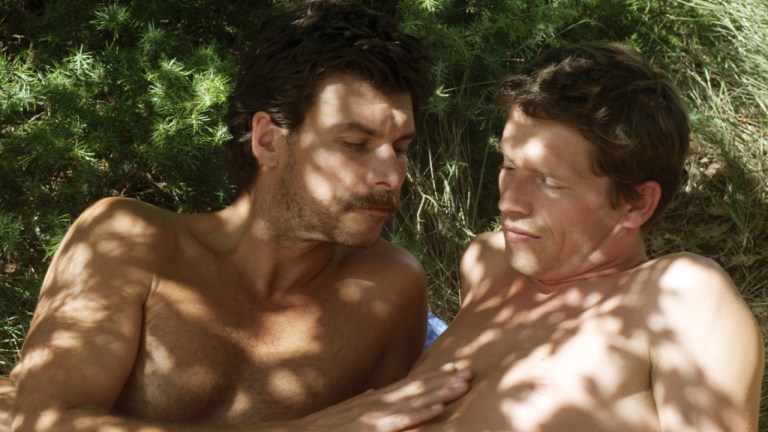
A French thriller about a gay man named Franck (Pierre Deladonchamps) who frequents a nude beach/cruising ground. Franck meets the handsome Michel (Christophe Paou) and pursues him, even after he witnesses Michel drown another man. Body doubles were used to film explicit sex scenes.
Knife + Heart (2018)
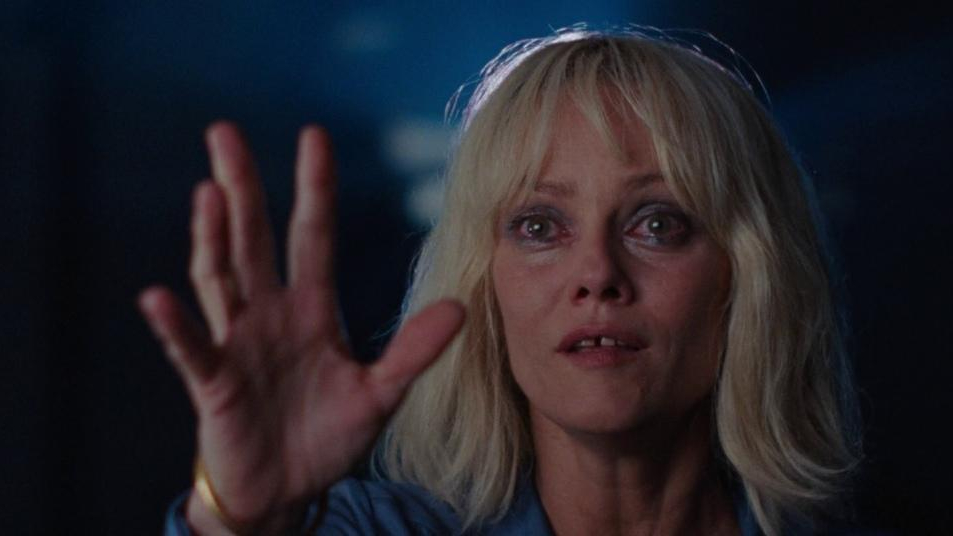
Vanessa Paradis stars in this French horror movie as a gay porn producer whose actors become the target of leather masked killer. She uses the murders as inspiration for her art despite drawing suspicion from investigators. Knife + Heart is an incredible queer horror movie that has heart, scares and a killer wielding a dildo knife.
The Perfection (2018)

Allison Williams stars as Charlotte Willmore, a gifted cellist who studied at the prestigious Bachoff school before leaving to care for her terminally ill mother. After her mother dies, Charlotte travels to Shanghai to visit with her former professors and befriends their new protégé Lizzie (Logan Browning). Charlotte and Lizzie begin a sexual relationship and decide to travel through China together. At this point a wild twist takes place and the entire movie changes direction.
What Keeps You Alive (2018)

A psychological horror movie following a married lesbian couple celebrating their first anniversary at a cabin in the woods. When they bump into one of the women’s childhood friend, someone’s duplicity is revealed. A quiet anniversary holiday in the woods quickly devolves into a fight for survival.
Titane (2021)

Written and directed by Julia Ducournau, Titane is a body horror psychological drama film centering on Alexia (Agathe Rousselle) who has a titanium plate in her head as a result of a childhood car accident. As an adult, Alexia works as a showgirl at a motor show and is shown killing a man who attempts to rape her and subsequently having a sexual encounter with a car (yes, you read that right). Alexia is also a serial killer who goes on the run after one of her victims escapes. She is taken in by a fire captain (Vincent Lindon) who believes Alexia may be his missing son Adrien. Vincent and Alexia form a father-son bond against all odds.
Swallowed (2022)
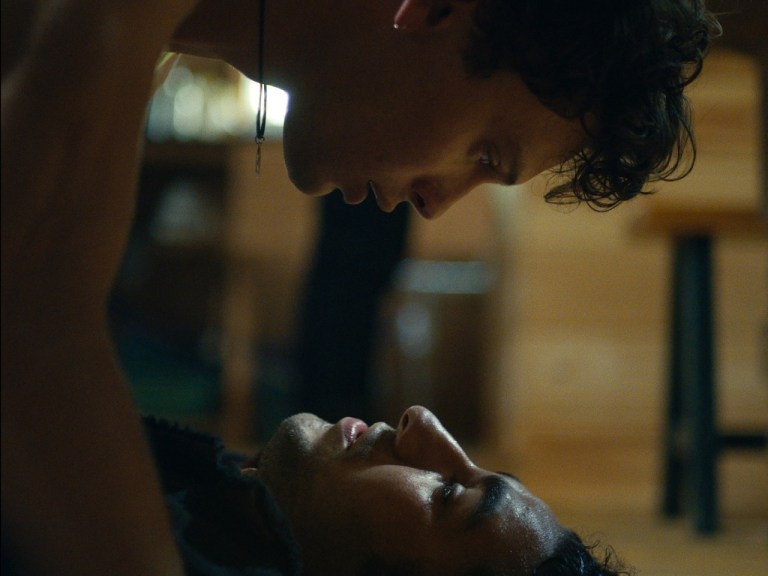
Ben (Cooper Koch) is about to leave small town Maine to become a gay porn actor in Los Angeles. On his last night, best friend Dom (Jose Colon) has a special surprise planned. Unfortunately, things do not go well and what could be a steamy film about male friendship and intimacy turns into a body horror nightmare. Swallowed also features stellar performances by Mark Patton and Jena Malone.
Bad Things (2023)

An incestuous queer friend group spends the weekend at Ruthie’s newly inherited hotel, which is dated, dilapidated and abandoned. The friend’s joke about the hotel’s ghosts, but as the trip goes on the apparitions become more and more real. Bad Things has mixed reviews and does struggle at times, but there are enough great moments for horror fans to enjoy this film.
Femme (2023)

A British thriller about a drag performer, Jules, who is beat up by a homophobic man, Preston. Months later, Preston does not recognize Jules (who has stopped dressing in drag) and expresses interest in him. Jules decides he will get revenge by filming the two having sex and posting it online, where Preston’s homophobic friends will see.
Slay (2024)
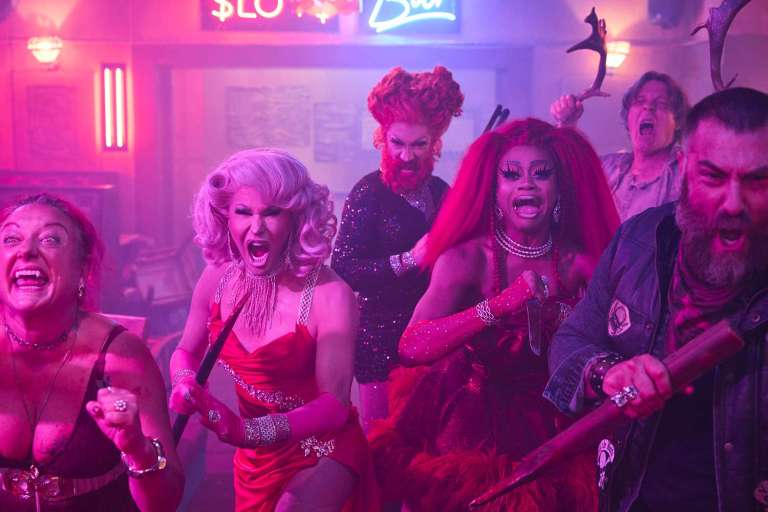
A comedy horror movie about four drag queens who accidentally book a performance at a rural dive bar. Initially unfriendly, the patrons change their mind about the drag queens when they need help fending off vampires. Former RuPaul’s Drag Race contestants Trinity the Tuck, Heidi N Closet, Crystal Methyd and Cara Melle star.
Clown in a Cornfield (2025)
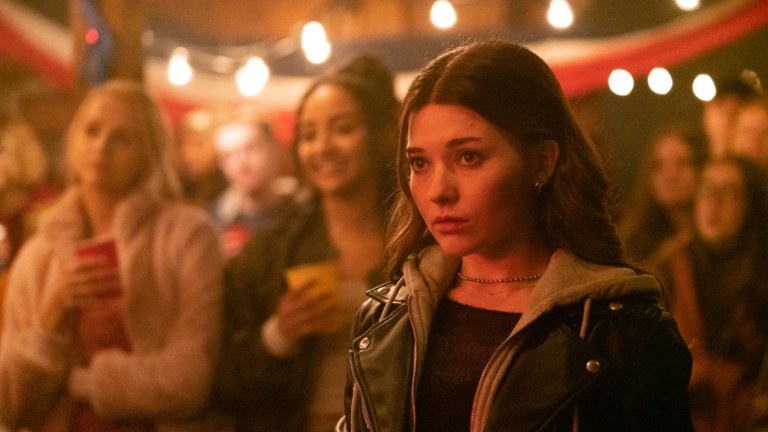
Quinn (Katie Douglas) moves to a small town in Missouri where she will finish her final year of High School. She is immediately thrust into the middle of a rivalry between the town’s older citizens and her fellow high school students. On top of that, the town’s clown mascot, Frendo, is terrorizing her classmates. How is this a queer horror movie? Without giving too much away, there is a secret queer relationship in Clown in a Cornfield that is part of the film’s big third act plot-twist.
More queer horror movies:
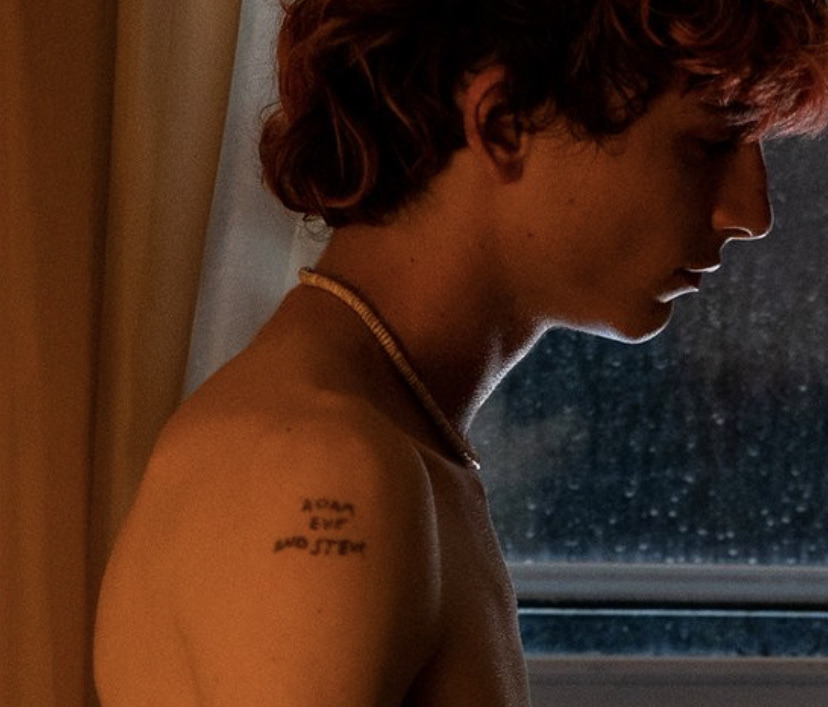
- Interview With the Vampire (1994) — Tom Cruise and Brad Pitt are vampire life partners in this homoerotic gothic horror film.
- Hellbent (2004) — A gay slasher movie following a group of men celebrating Halloween in West Hollywood.
- The Skin I Live In (2011) — A disgraced plastic surgeon (Antonio Banderas) conducts human experiments, including bottom surgery, on an unsuspecting victim.
- The Roommate (2011) — A psychological thriller about a woman (Leighton Meester) who has an all-encompassing obsession with her roommate (Minka Kelly).
- Tom at the Farm (2013) — A psychological thriller directed by and starring Xavier Dolan as a man visiting his recently deceased boyfriend’s family farm to deliver the eulogy at his funeral.
- B&B (2017) — A gay couple from London travel to a B&B in the countryside, which is owned by a bigoted Christian.
- Bit (2019) — A trans teen falls in with a clique of queer feminist vampires.
- Midnight Kiss (2019) — A slasher movie following a group of gay men celebrating the New Year in the desert.
- Scream, Queen! My Nightmare on Elm Street (2019) — A documentary where actor Mark Patton talks about becoming the first male scream queen and being scapegoated for the homoerotic undertones in A Nightmare on Elm Street 2: Freddy’s Revenge (1985).
- Spiral (2019) — A gay couple moves to a small town to raise their daughter but discover horror there instead.
- Fear Street (2021) — A Netflix trilogy based on the R.L. Stine series and starring Kiana Madeira as a lesbian high school student whose girlfriend wants to remain closeted.
- The Retreat (2021) — A troubled lesbian couple leaves the city to join their friends at a cabin in the woods but when they arrive, their friends are nowhere to be found.
- Bodies Bodies Bodies (2022) — A black comedy horror movie about a queer woman and her girlfriend who hole up with wealthy friends during a hurricane.
- Bones and All (2022) — A romantic horror movie following two young cannibals (Taylor Russell and Timothée Chalamet) as they navigate life together.
- They/Them (2022) — Kevin Bacon made his return to the campground slasher genre in this attempt at a campy horror comedy.
- Knock at the Cabin (2023) — A gay couple and their daughter are held hostage by a group of strangers at their cabin and asked to make a ghastly decision.
- Scream VI (2023) — A lesbian character, Mindy Meeks-Martin (Jasmine Savoy Brown), is introduced in Scream (2022) and is shown with her girlfriend Anika (Devyn Nekoda) in the sixth Scream installment.
- Love Lies Bleeding (2024) — This psychological thriller revolves around the relationship between gym manager Lou (Kristen Stewart) and body-builder Jackie (Katy O’Brian).
Further reading:
